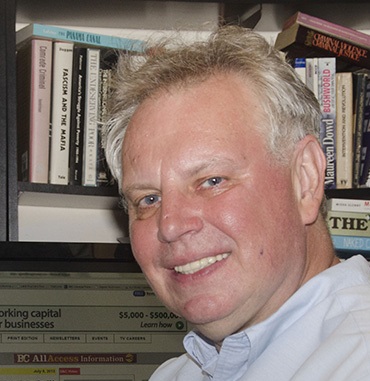TVNZ Deploys Imagine Communications’ SureFire Ad Server
This innovative deployment allows TVNZ to maximize its ad sales by combining traditional linear monetization with programmatic flexibility

DENVER—New Zealand’s state-owned, commercially funded broadcaster, TVNZ has implemented Imagine Communications’ SureFire video ad server as part of the ad management workflow that supports its three broadcast channels and digital platform, TVNZ+.
The deployment follows a successful production trial in 2024, which demonstrated the ability of the SureFire linear control feature to help TVNZ extend linear budgets into digital and increase ad break replacement rates, the companies reported.
TVNZ’s primary objective was to simplify and accelerate its path to “total TV” monetization by leveraging SureFire’s linear control capabilities. The solution allows the broadcaster to mirror portions of linear campaigns into digital, enabling a consistent viewer experience and unlocking incremental digital inventory — without needing to overhaul existing systems.
This approach allowed TVNZ to address a key challenge: underfilled ad breaks on TVNZ+ that previously resulted in lost revenue. If an acceptable threshold of demand was not met within a given break, the entire break was not dynamically served, resulting in a loss of revenue. The trial showed that by using SureFire to extend already sold linear spots to digital, TVNZ could offer advertisers a new premium product, resulting in better utilization of ad inventory and improved fill rates, Imagine explained.
TVNZ’s pricing and inventory manager, John Fiddian, said, “Our audiences are watching the same content cross-platform. With viewers on broadcast channels and streaming on TVNZ+, it’s important that the way we serve advertising marries up with this audience fragmentation. Adding SureFire has helped our advertisers to seamlessly reach cross-platform audiences within a single campaign. It’s an efficient solution that fits our move towards a ‘Total TV’.”
SureFire enables direct sales with combined linear ad buys and is fully compatible with existing programmatic supply-side platforms. Offering open APIs that facilitate integration with existing ad tech stacks ― regardless of the sales, order management, and traffic solutions that a TV operator may prefer ― SureFire enables broadcasters to sell ads more effectively across their entire footprint by adding linear control to complement their programmatic capabilities, Imagine said.
Using SureFire linear control capabilities, TVNZ can book elements of their ad-served inventory just like linear; deliver commitments to specific ad break placements across linear and streaming; and combine linear control spots with addressable, targeted ads in broadcast-quality ad breaks.
Get the TV Tech Newsletter
The professional video industry's #1 source for news, trends and product and tech information. Sign up below.
“I think a common industry misconception is that if you incorporate a new ad server into your workflow, you're taking some of the profits from another ad server — and it doesn't necessarily have to be that way,” said Graham Heap, vice president of product strategy, ad tech, at Imagine Communications. “SureFire enables broadcasters to combine direct sales with programmatic automation to eliminate unfilled breaks and achieve higher CPMs. What the trial at TVNZ showed was that SureFire did not cut into the programmatic pie — it created more pie for everyone.”
This innovative approach allows TVNZ to maximize its ad sales by combining traditional linear monetization with programmatic flexibility, marking a pioneering step forward in the digital advertising space.
Imagine Communications will be discussing "Total TV" monetization strategies at the 2025 NAB Show (April 6-9, Las Vegas Convention Center, Booth W2067). To book a hands-on demo of SureFire or for further details about Imagine’s presence at this year’s event, visit imaginecommunications.com/event/nab-2025.
George Winslow is the senior content producer for TV Tech. He has written about the television, media and technology industries for nearly 30 years for such publications as Broadcasting & Cable, Multichannel News and TV Tech. Over the years, he has edited a number of magazines, including Multichannel News International and World Screen, and moderated panels at such major industry events as NAB and MIP TV. He has published two books and dozens of encyclopedia articles on such subjects as the media, New York City history and economics.

